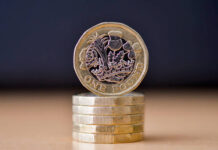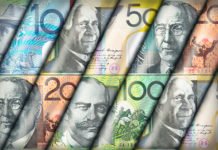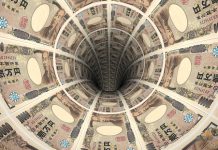Markets
US data continue surprising to the upside. The Fed’s aim to slow demand via higher interest rates apparently didn’t hurt the consumer in a profound way yet. Headline January retail sales jumped 3.0%, admittedly after two monthly declines. Growth was broad-based. Core control group sales rose a bigger than expected 1.7%. The Empire manufacturing survey, while still in negative territory rebounded sharply from -32.9 to -5.8, indicating potential better prospects for the sector, too. Combined with uncomfortably high US CPI inflation published Tuesday, markets realize that the case is building for the Fed to raise rates higher than guided in December and to keep them at that elevated level for longer. US yields closed off the intraday highs, but still gained 1.6 bps (2-y) to 6.6 bps (30-y). The market now sees a about a 50% chance for a final 25 bps hike early summer, after two additional steps in March and May. German yields showed a similar pattern, rising between 2.5 bps (2-y) and 5.6 bps (30-y). So, no further curve inversion. Are markets considering that CB’s will accept inflation to stay above the target for a bit longer, too? Before the EU Parliament, ECB’s Lagarde reiterated the intention to raise the policy rate by another 50 bps in March, but gave no concrete guidance on the path afterward. Good news and expectations for higher rates still hardly hurt equity sentiment. After a negative open, US indices again closed in green (Dow +0.11%; Nasdaq +0.92%). Higher core yields slightly favoured the dollar, but no key resistance levels were broken. DXY tested the 104 area but closed just below. EUR/USD finished at 1.0689, but the 1.0656 correction low stayed out of reach. Softer than expected UK inflation data aborted recent sterling comeback. EUR/GBP jumped higher to close at 0.8883.
Most Asian markets enjoy a risk-on sentiment in the wake of yesterday’s intraday rebound on WS. Treasury yields are easing marginally, as does the dollar (EUR/USD 1.0700, USD/JPY 133.9). Later, the calendar remains interesting. The monthly pace of US PPI inflation (expected at 0.4% M/M) is also expected to reaccelerate. The Philly Fed business outlook and the NY Fed services index, together with the US jobless claims will provide further evidence on the resilience of activity. Positive surprises will cement recent repositioning toward ongoing decisive Fed action. Plenty of Fed and ECB speakers are scheduled to speak. The US 2-y yield (4.61%) has the cycle (closing) peak with reach. The German 10-y (2.47%) and the EMU 10-y swap yield (3.02%) did brake intermediate resistance (2.20% and 2.92%), conforming the upward momentum. Dollar gains stay limited for now, but a break beyond key USD resistance levels (DXY 104 area, EUR/USD 1.0656) might accelerate the greenback’s momentum.
News Headlines
Australian employment fell 11.5k in January, on the account of full-time employment (-43.3k). Part-time jobs rose by 31.8k still. Analysts penciled in 20k job growth. Australia’s participation rate eased from 66.6% to 66.5% and the unemployment rate ticked higher, from 3.5% to 3.7%. Both were seen unchanged prior to the release. The Reserve Bank of Australia at the February meeting took a hawkish pivot, outlining more rate hikes to ensure inflation heads back to target. The move was at least partially inspired on labour market strength and the risk for a wage-price spiral. After today’s data, some doubts arose. Australian government bond yields pared intraday gains that easily went into the double digits. The short end of the curve currently loses a few bps but money markets nevertheless stick to their >4% terminal rate by the summer. The Aussie dollar quickly recovered from a kneejerk move lower on general USD weakness. AUD/USD holds above 0.69.
The US Congressional Budget Office warned that the government’s “ability to borrow using extraordinary measures will be exhausted between July and September”. If the debt ceiling, currently at $31.4tn, isn’t raised, the so-called X-date could even come before July if income tax receipts due in April fall short of current estimates. The discussion to lift the ceiling is at a stalemate. The White House called on Congress to do so unconditionally but Republicans seek to tie it to sweeping budget cuts. The CBO also delivered an update to its economic outlook for this year and the next decade. It estimates the federal budget deficit at $1.4tn this year. Annual deficits could average $2tn over the next 10 years with the cumulative deficit over that period about $3tn higher than previously thought due to recent legislation and increased borrowing costs.












